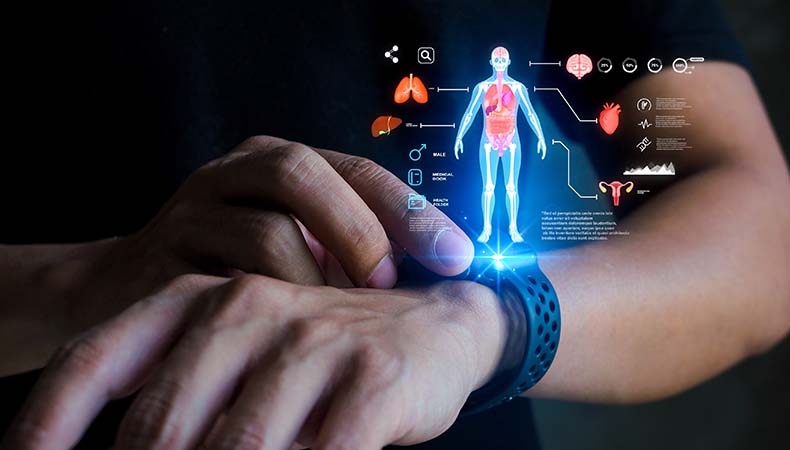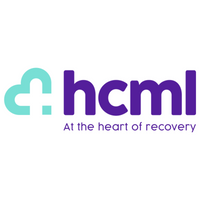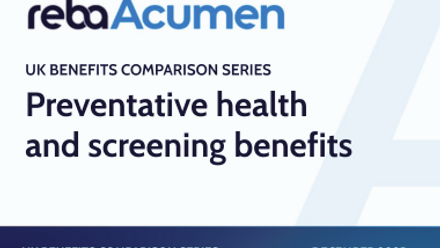Preventative health and wellbeing strategies are evolving - here's how
As the workplace continues to evolve in response to hybrid models, rising mental health needs, and economic pressures, wellbeing is increasingly recognised as a strategic imperative that drives productivity, resilience and long-term success.
A shift toward holistic, personalised approaches
Modern wellbeing strategies are moving away from just undertaking siloed interventions and awareness programmes to a more focused, integrated and person-centred approach.
Mental, physical, nutritional and financial wellbeing are deeply interconnected, and effective strategies now reflect this complexity.
Organisations are embracing holistic models that address the full spectrum of employee needs, recognising that sustainable wellbeing requires more than isolated initiatives.
As a result, preventative health is becoming a core component of employee benefits packages.
When thoughtfully designed and well implemented, these programmes lead to measurable improvements in health outcomes, job satisfaction, productivity and retention, while also reducing absenteeism and healthcare costs.
Understanding the role of psychosocial factors
An individual's physical health cannot be fully understood without considering the psychosocial factors that influence it.
Chronic stress, poor sleep, financial strain and limited time for self-care all erode resilience and increase vulnerability to illness or injury.
These factors may not cause immediate harm, but they significantly raise the risk of chronic conditions, fatigue and long-term absence.
The data we collect at HCML consistently highlights the link between health challenges and personal risk factors such as inactivity, excess weight and negative health beliefs.
These insights are shaping a new generation of preventative strategies, ones that are inclusive, data-informed and tailored to the real-world experiences of employees.
The power of early intervention
Early intervention is a cornerstone of effective wellbeing strategies. Identifying and addressing issues before they escalate leads to better outcomes for individuals and tangible benefits for organisations.
For example, recognising early signs of stress or burnout allows for timely support, such as counselling, workload adjustments or flexible work arrangements, before more serious consequences arise.
Similarly, addressing physical concerns like poor posture or disrupted sleep can prevent long-term health issues that impact performance and attendance.
A proactive approach not only supports individual wellbeing but also contributes to a healthier, more stable and high-performing workforce.
It’s clear from our data within HCML and recent government reports that there continues to be a rise in mental health conditions at an earlier age. It is therefore becoming imperative to focus on early intervention techniques.
EAPs and the importance of cultural support
Employee assistance programmes (EAPs) remain a vital resource, offering confidential support for a wide range of personal and professional challenges.
Today’s EAPs extend beyond mental health to include legal, financial, family and addiction support. However, their effectiveness depends on accessibility and cultural acceptance.
Creating a workplace culture that encourages the use of wellbeing resources is essential. Employees must feel empowered to seek support, whether that’s taking a 20-minute consultation or accessing digital tools, without fear of stigma or judgement.
When leaders model healthy behaviours and openly prioritise wellbeing, they set the tone for a psychologically safe culture. In driving a culture, leadership and management plays a pivotal role.
Accessibility, engagement, and the role of technology
The digital transformation of wellbeing services has significantly improved accessibility. Employees can now engage with resources anytime, anywhere, which is an essential feature in hybrid and remote work environments.
Engagement increases when platforms include features like reminders, gamification, and on-demand content, making wellbeing support more interactive and personalised.
Personalisation is a key shift. AI-powered platforms now make it possible to offer wellbeing recommendations tailored to individual needs, preferences and goals.
This tailored approach increases relevance, drives engagement and improves outcomes. Real-time data and feedback loops also enable organisations to monitor usage, understand which initiatives are working, and adapt their strategy for greater impact.
When wellbeing support feels both relevant and easy to access, employees are more likely to use and benefit from it.
The challenge for any organisation in an increasingly challenging economic environment is to continue demonstrating that these sorts of technology drives outcomes and therefore offer value for money.
A data-led, integrated future
The most effective wellbeing strategies are those that integrate mental, physical, social and financial health into a cohesive framework.
Increasingly, organisations are using data and analytics not only to guide what support to offer but also to measure its impact. This evidence-based approach strengthens the business case for continued investment in wellbeing.
When employees are supported as whole individuals, with strategies that are accessible, personalised and grounded in data, the benefits are clear: reduced absenteeism and presenteeism, improved morale and engagement, and stronger organisational resilience.
Supplied by REBA Associate Member, HCML
HCML is a health and wellbeing provider, offering integrated and personalised healthcare solutions.








